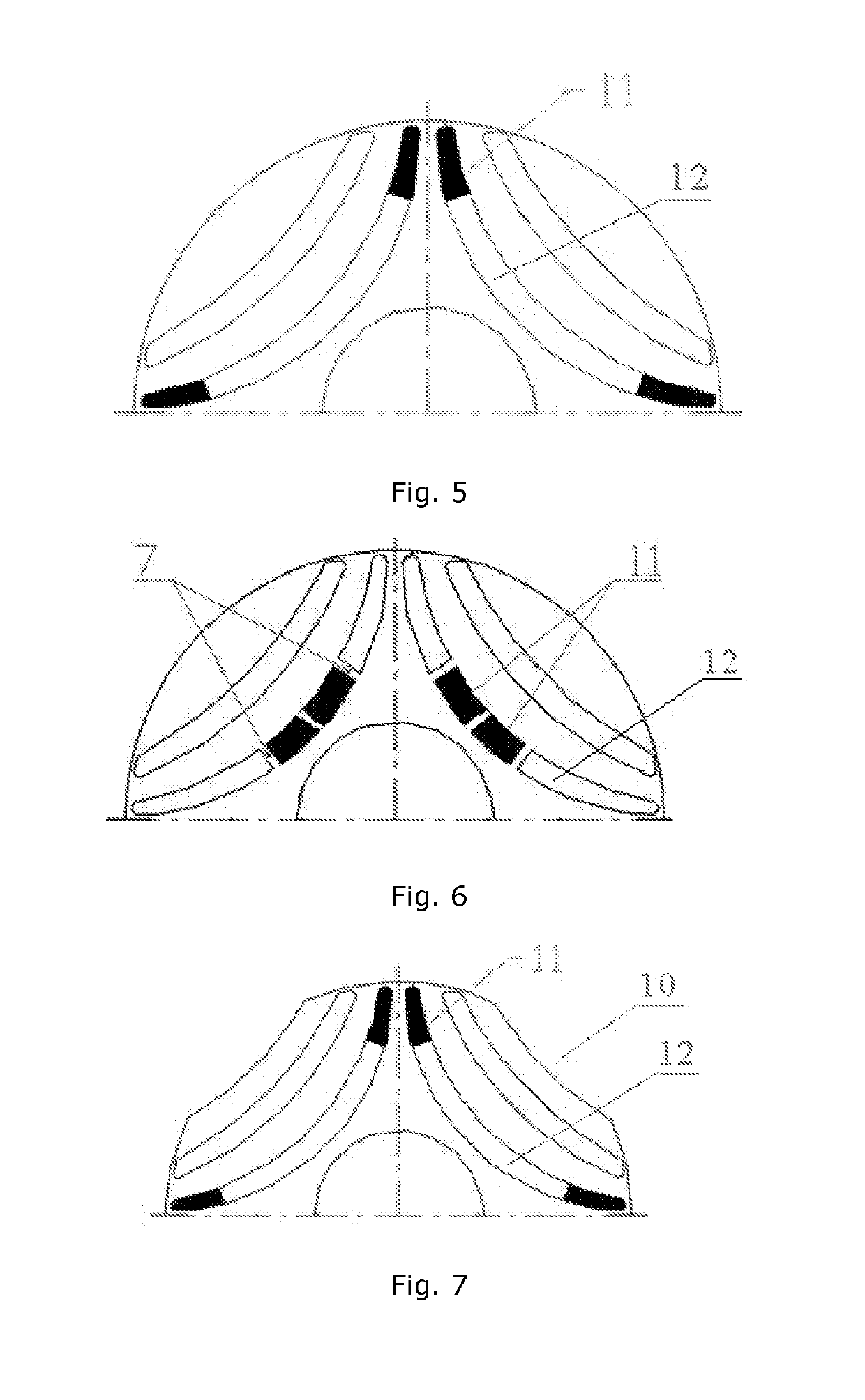Synchronous reluctance machine
a synchronous and reluctance machine technology, applied in the field of electromechanical engineering, can solve the problems of failure to achieve maximum rotor anisotropy, low energy characteristics (efficiency, power factor, specific torque, etc.), and achieve the effect of improving the energy characteristics of the reluctance machine, in particular power factor, efficiency, specific torque and specific power
- Summary
- Abstract
- Description
- Claims
- Application Information
AI Technical Summary
Benefits of technology
Problems solved by technology
Method used
Image
Examples
Embodiment Construction
[0035]The embodiments of the disclosed synchronous reluctance machine (SynRM) are aimed at increasing its energy characteristics (efficiency, specific torque and specific power) for a fixed number of flux barriers.
[0036]In one embodiment, the SynRM comprises a stator with a winding arranged within stator slots, and a rotor mounted to provide a gap between the rotor and the stator, the rotor being rotatable with respect to the stator. Stator winding can be distributed or concentrated.
[0037]FIG. 1 illustrates a rotor structure. In one embodiment, the rotor is a steel cylinder comprised of sheets with transverse lamination. The rotor comprises alternatingly arranged magnetically permeable layers 1 (i.e., layers of high magnetic permeability) and flux barriers 2, 8 and 9 (i.e., layers of low magnetic permeability). Axis 4 of high magnetic permeability is defined as the d-axis, and axis 5 of low magnetic permeability is defined as the q-axis. The flux barriers 2, 8 and 9 are formed by cu...
PUM
 Login to View More
Login to View More Abstract
Description
Claims
Application Information
 Login to View More
Login to View More - R&D Engineer
- R&D Manager
- IP Professional
- Industry Leading Data Capabilities
- Powerful AI technology
- Patent DNA Extraction
Browse by: Latest US Patents, China's latest patents, Technical Efficacy Thesaurus, Application Domain, Technology Topic, Popular Technical Reports.
© 2024 PatSnap. All rights reserved.Legal|Privacy policy|Modern Slavery Act Transparency Statement|Sitemap|About US| Contact US: help@patsnap.com










